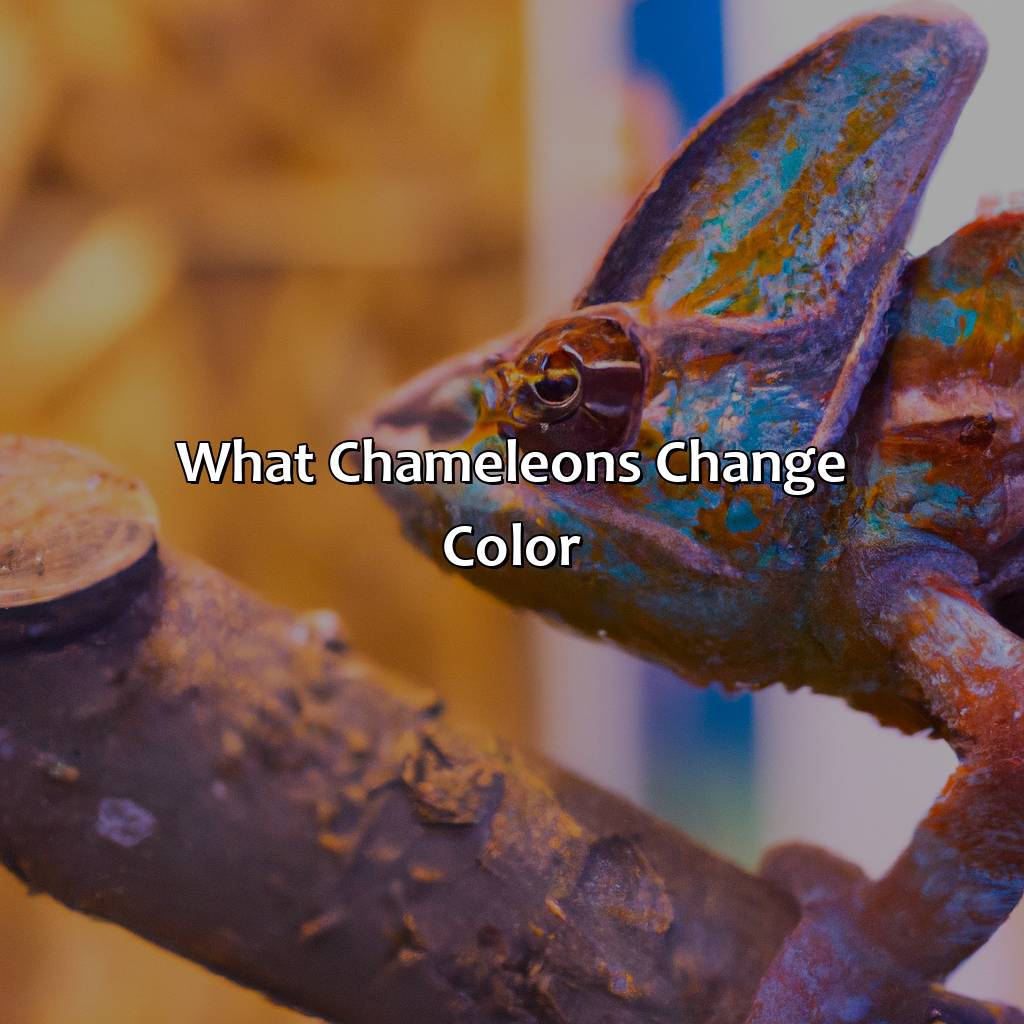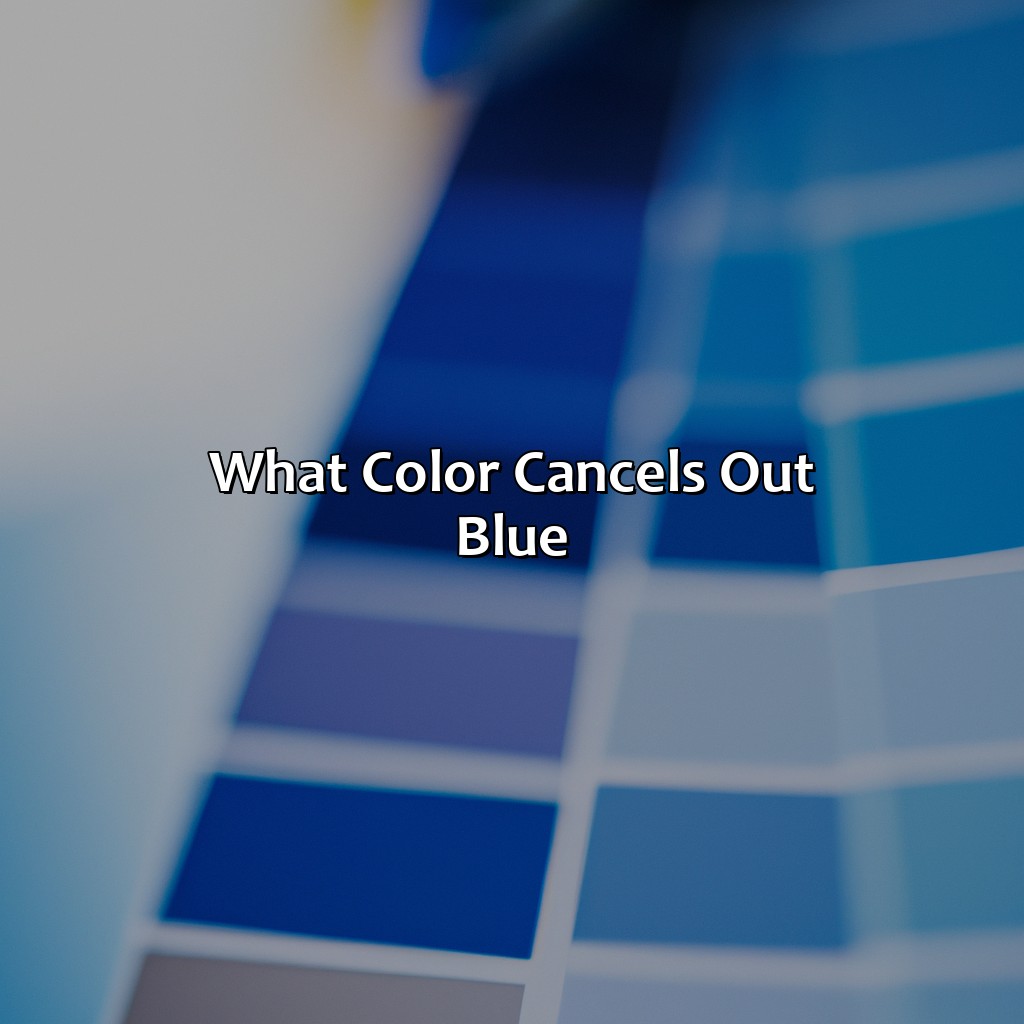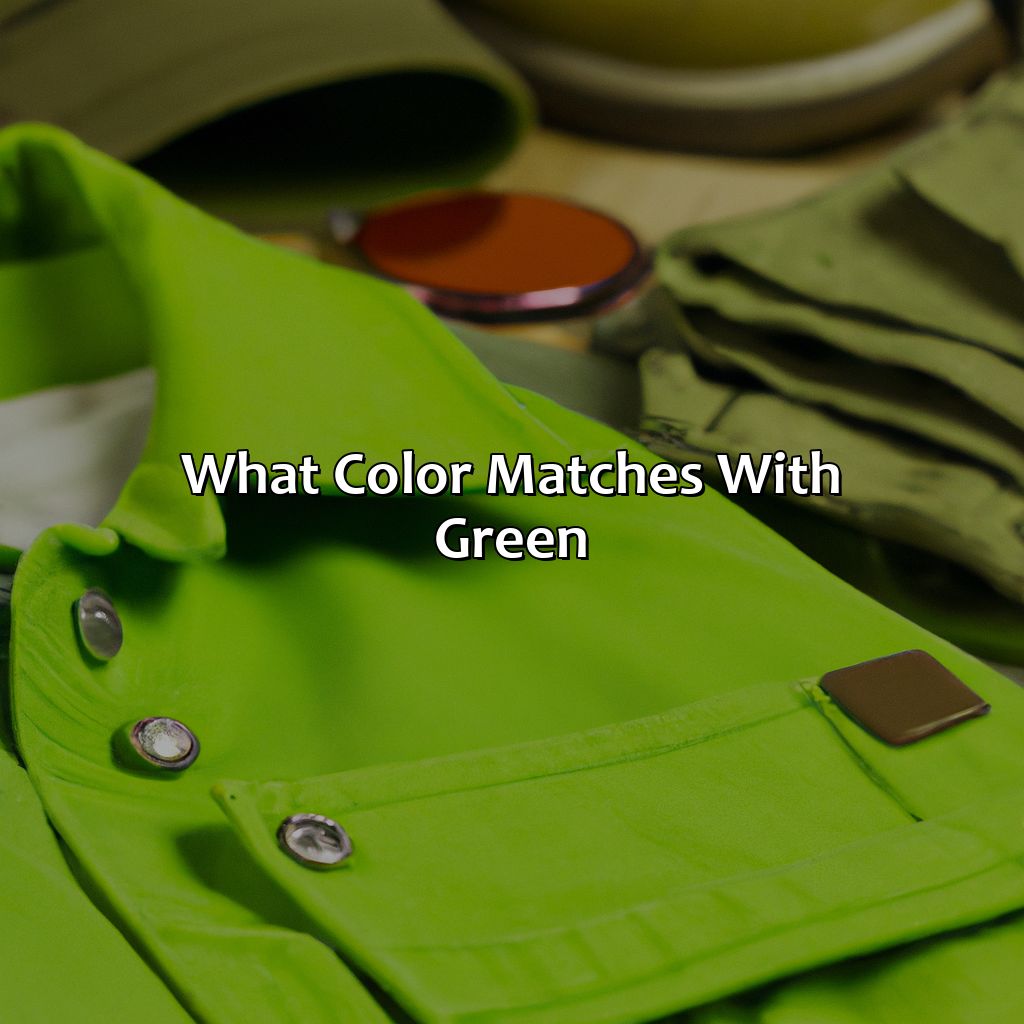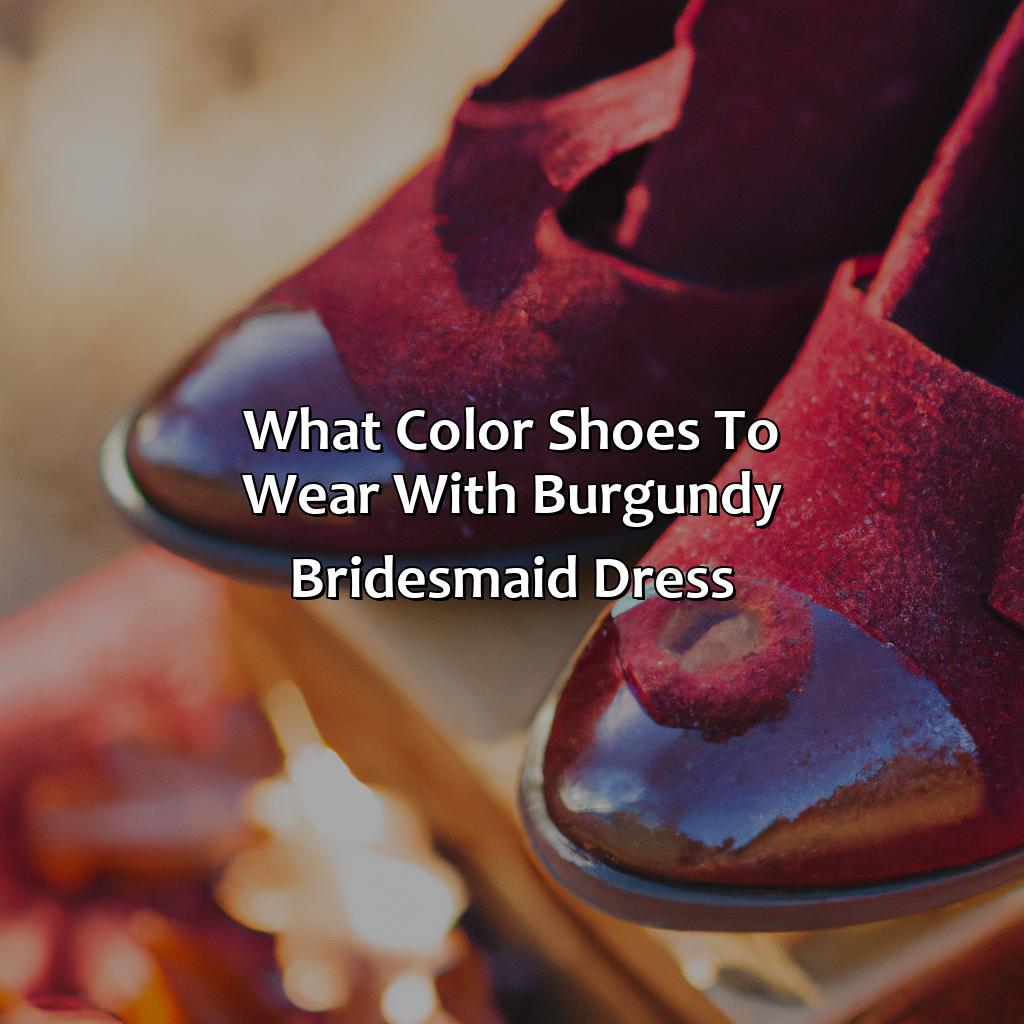Key Takeaway:
- The opposite color of orange is blue. Understanding color theory, including the color wheel, primary and secondary colors, and complementary colors, can help guide color choices in design and art.
- Complementary colors are pairs of colors opposite each other on the color wheel, and they create a strong color contrast when used together. Blue is the complementary color of orange, and they are often used together for high contrast in designs and artworks.
- In graphic design, the combination of blue and orange is commonly used for branding purposes. In art, the use of blue as the opposite of orange can be seen in the works of many artists throughout history, and the combination of these colors can evoke different emotional responses and moods depending on the specific context and usage.
Understanding color theory
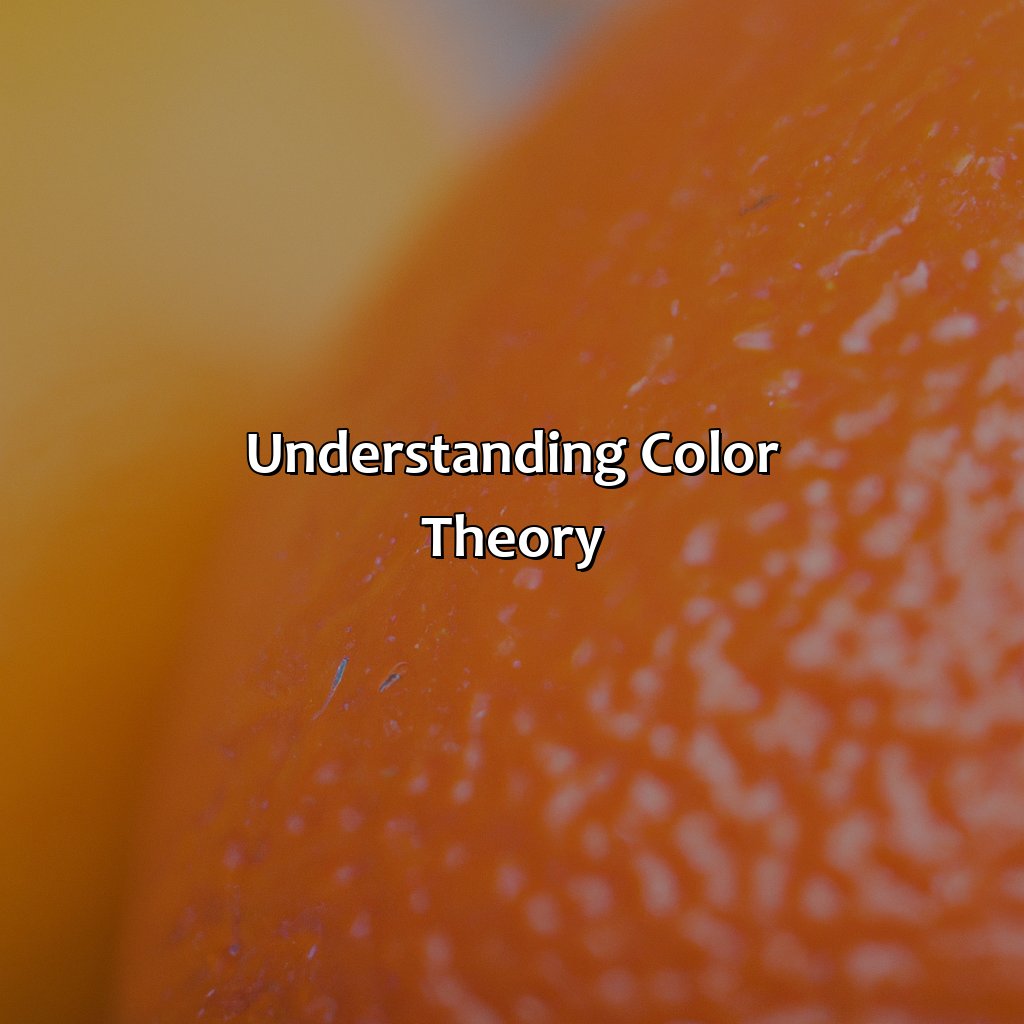
Photo Credits: colorscombo.com by Logan Brown
Grasping color theory? Primary and secondary colors? Color wheel? It’s a must to be aware of opposite color pairs. That’s where complementary colors come in. Knowing opposites helps create eye-catching, balanced, and pleasing color palettes.
Opposite colors in the color wheel
When it comes to creating a visually appealing design, one must consider the importance of color theory. Opposite colors in the color wheel play a significant role in achieving this balance as they bring out each other’s vibrancy. By understanding this concept, designers and artists can create striking and complementary color pairs that enhance their work.
Using a data-driven table, we can better understand opposite colors in the color wheel. For instance, the opposite of red is green while blue’s complement is orange. Similarly, purple contrasts with yellow, and pink complements turquoise. Such contrasts help create visual interest and harmony in designs.
Incorporating opposite colors into designs can be done in various ways that are both unique and creative. In fine art, artists like Roy Lichtenstein used these color pairings to create tension and emphasize elements of his pop art pieces. In contrast, graphic designers use these pairs to grab their audience’s attention through contrast and boldness.
One interesting fact surrounding opposite colors is how they can affect emotions and moods due to their psychological effects on individuals. These pairings elicit reactions that can impact behavior, memory retention or even purchase decisions in marketing strategies or branding approaches.
By understanding the pairing concept behind “what is the opposite color of orange“, creatives can produce attractive designs while invoking emotions that effectively deliver messages or express ideas through visual arts. Can you handle the juicy details of the case of orange and its color properties and mixing?
The Case of Orange

Photo Credits: colorscombo.com by Arthur Jackson
To grasp orange’s properties and color mixing better, let’s explore its complementary colors and its opposite. Orange’s complementary colors like pairing and contrast magnify its beauty. The opposite color of orange, the wheel’s opposite, and the name of color opposite to it open a new realm of color theory.
Complementary Colors
When designing with orange, its complementary color is blue. The two colors work together to create a bold impact, drawing the viewer’s attention instantly. They can be used in various ways, such as background and foreground combinations or accent colors for readability.
Experts believe that using complementary colors can improve legibility because of their high level of contrast. When it comes to energetic and playful design, orange-blue pairings work wonders. Their distinct personalities balance each other out perfectly while still complementing each other effortlessly.
Incorporating complementary colors can help brands stand out from competitors while also being memorable to their target audiences. By using orange’s complementary color blue in marketing campaigns, brands can command attention while also portraying a sense of trustworthiness.
Try experimenting with orange and blue for your next design project, and see how they enhance each other when blended perfectly!
Orange, meet your mortal enemy on the color wheel – it’s all downhill from here.
Orange’s Opposite in the Color Wheel
The color wheel opposite of orange is an essential aspect of color theory, impacting its use in art and design. The opposite color to orange can create dynamic visual effects and emotions when used correctly in design and branding strategies.
To understand the opposite color of orange in the color wheel, consider the following table:
| Primary Colors | Secondary Colors |
|---|---|
| Red | Green |
| Blue | Orange |
| Yellow | Purple |
The name of the color opposite to orange is blue-green or teal. The complementary color relationship between orange and blue-green offers a visually pleasing contrast that can evoke various emotional responses and moods. Blue-green’s placement on the opposite end of the color wheel to orange gives it a unique ability to balance the warm tones of orange. Designers utilize this technique in marketing and branding strategies to grab people’s attention while conveying professionalism, reliability, and trustworthiness.
While not often used as a primary focus, Blue-Green has several applications across different artistic disciplines. For instance, many artists have explored using blue-green for oceanic landscapes or forest scenes. In one such example, Vincent Van Gogh’s Starry Night utilizes blue-green in its sky background alongside contrasting yellows and oranges in various elements like lights from buildings and stars. The result is a visual tension that inspires complex emotional experiences for viewers by evoking nostalgia for starry nights amongst fields of wheat.
A personal story exemplifying this impact comes from Sophie Wu who explained that inviting her colleagues over after painting her walls with a mix of vibrant oranges hues displayed an overwhelming sense of happiness with their surprise seeing they did not expect such welcoming feeling from these colors but attributed it to experience & friendship too.
Overall, understanding the name of the color opposite to orange assists artists and designers to convey emotional messages effectively. Using complementary colors requires crafty construction ensuring aesthetics cues are met alongside functional objectives being accomplished similarly as it did for Sophie’s experience. From bold graphic designs to subtle color contrasts in fine art, orange’s opposite color is a versatile tool for creative expression.
Examples of Orange’s Opposite Color in Design and Art
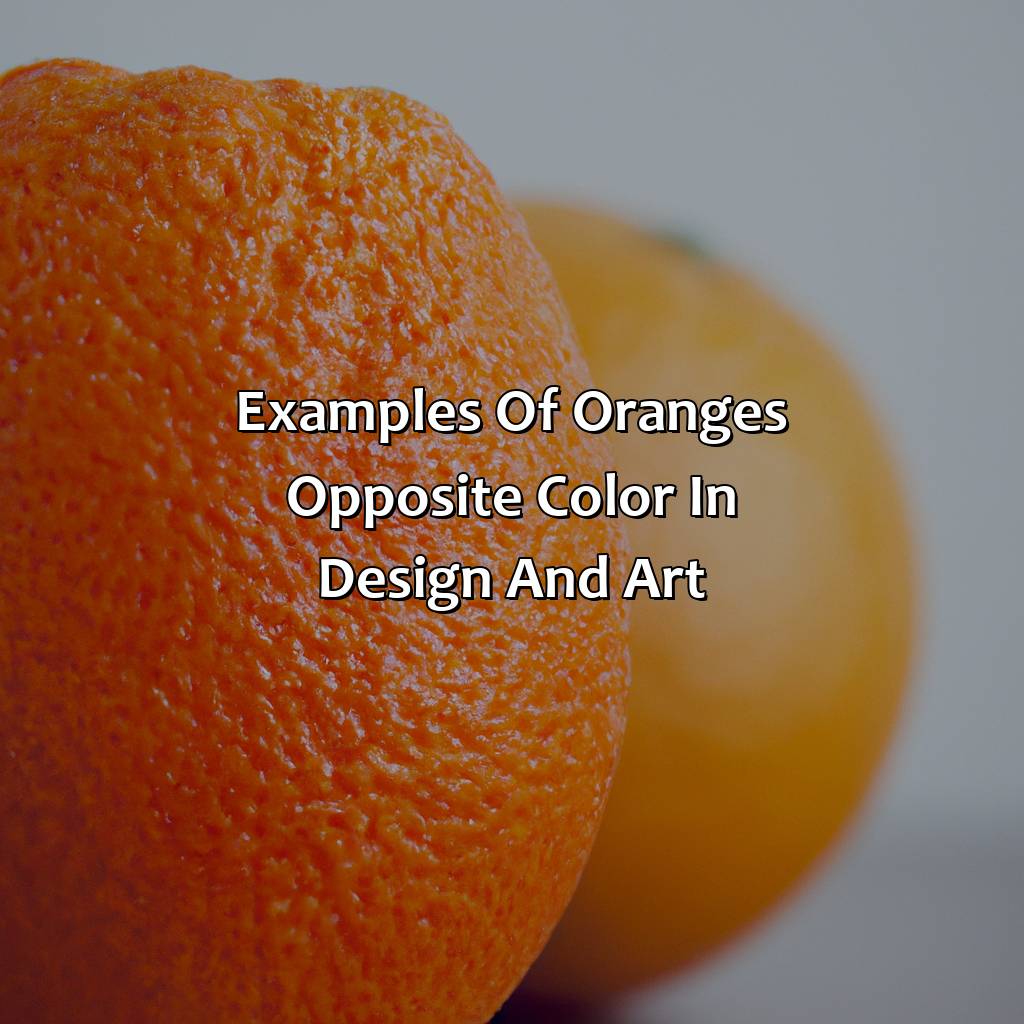
Photo Credits: colorscombo.com by Sean Anderson
Delve into graphic design, color psychology, and branding to explore the opposite color of orange and its artistic applications. Analyze examples in fine art to uncover color symbolism and color expression in art history.
Applications in Graphic Design
Graphic design principles can be enhanced with the proper use of color in design. The right colors have a significant impact on the overall message and impression of a design.
| Usage | Color Scheme Examples |
|---|---|
| Highlighting important information | Using orange’s opposite color, blue, can convey seriousness and professionalism to the audience. |
| Incorporating emotions into designs | The use of orange’s opposite color, blue, can evoke trust and dependability in branding designs. |
Unique details about graphic design principles include the importance of understanding color psychology to create a cohesive visual language for a brand. The choice of colors must resonate with the target audience and align with the brand values.
Orange’s opposite color has been widely used in branding to create an emotional response towards brands that associate with dependability and trustworthiness. Orange is often regarded as youthful, energetic or aggressive while opposite colors such as blue evoke feelings of reliability and thoughtfulness.
Interestingly enough, color psychology effects were first studied back in an 1878 paper published by the scientist Ewald Hering who was interested in how humans perceive color. His findings have been built upon over time by psychologists and eventually became an integral part of modern branding practices.
Fine art has always known the power of opposites, and the usage of colors and their symbolism has only added more depth to the emotional expression of art.
Examples in Fine Art
Fine Art Depicting Opposite Colors of Orange
A comprehensive discussion of fine art pieces that showcase the opposite color of orange.
Several artists throughout art history have employed the usage of opposite colors to signify contrasting emotions and moods. Below is a table presenting examples of fine art pieces that illustrate notable color combinations with orange’s opposite color.
| Artist | Fine Art Piece | Opposite Color |
|---|---|---|
| Vincent van Gogh | Cafe Terrace at Night (1888) | Blue-green |
| Pablo Picasso | Femme en vert (1909) | Red |
| Wassily Kandinsky | Composition VII (1913) | Blue-green |
These artworks present unique symbolisms through their compositions, highlighting how opposite colors can evoke certain emotions to the viewer. By using blue-green and red as complementary shades towards orange tones, it induces visual balance within these works and enhances an overall meaning.
In art history, color usage has deep-rooted symbolism as seen in these fine art interpretations. It highlights how artists use specific color palettes to express emotion or mood better. Through this knowledge, creatives can learn to incorporate excellent color expression in their work.
Pro Tip: Learn from past masters’ use of opposing colors and how they weave them into their compositions for greater impact.
Orange’s opposite color can evoke a completely different emotional response, making it a powerful tool in branding and marketing strategies.
The Psychology of Orange’s Opposite Color

Photo Credits: colorscombo.com by Austin Carter
Contemplate how color affects emotions and mood to comprehend the psychology of orange’s opposite hue. Color therapy involves utilizing tints to activate or diminish feelings, making them great options for branding and marketing plans. In this article part, we’ll look into the emotional answers and feelings that colors generate, particularly how orange’s opposite color bolsters certain sentiments. In addition, we’ll assess how firms use their color choices in their promotion to modify consumer behavior and make special marketing experiences.
Effects on Emotions and Mood
The color opposite to orange affects human emotions and mood significantly. It is important to understand the relationship between color and emotion, as it has the potential to impact behavior and decision-making in various situations. Color therapy is a popular method of using color to influence one’s mood positively. The meaning of colors varies across cultures; for example, black is associated with mourning in many cultures, while white symbolizes purity or grace.
The opposite color of orange affects humans’ emotions differently, depending on individual preferences and circumstances. For instance, blue, which is considered opposite on the color wheel, creates a calming effect and can reduce stress levels. Meanwhile, green provides an ambiance that promotes restfulness and relaxation.
Color plays a crucial role in marketing strategies as well. Companies often use specific colors in their branding efforts based on the emotions they want to evoke. Red for example can be used by food companies because it stimulates appetite.
Pro Tip: Understanding the significance of the opposite color of orange can help designers and marketers make better decisions when selecting effective colors for their products or services. Incorporating this knowledge into designs will create emotionally appealing aesthetics leading to better customer retention rates.
Orange may be the new black, but when it comes to marketing and branding strategies, its opposite color steals the spotlight.
Marketing and Branding Strategies
The utilization of color in branding and marketing campaigns is essential for establishing brand identity and recognition. Understanding color theory, including the opposite colors in the color wheel, can aid in creating effective branding and marketing strategies. In lieu of this, selecting colors that contrast with an orange base can potentially enhance promotional efforts.
Utilizing the psychology behind orange’s opposite color to develop a branding strategy will promote a unique identity for the organization or product. The use of contrasting colors, such as blue or green, allows for memorable design and images. This technique can be beneficial in strengthening brand recall among target audiences.
To fully incorporate orange’s opposite color in advertising campaigns, it is important to understand its impact on emotions and mood. Opposite colors have distinctive psychological effects on individuals. Utilizing blue with orange promotes a sense of security and calmness. Green with orange is associated with growth, harmony, and positivity. Such techniques increase viewership retention toward commercials and foster positive responses.
In historical analyses of successful advertising campaigns utilizing opposing colors—e.g., McDonald’s red/yellow palette—it becomes evident that these businesses have created unique identities by applying such contrasts purposefully. As such, employing strategic branding utilizing oppositional contrasts can assure viewer attention.
Overall, understanding how to incorporate an opposing hue when working with hues like orange creates a unique approach to design practice or advertising initiatives—ultimately capturing audience interest through visually stimulating materials – predominantly via utilizing contrasting colored advertisements promoting harmony between brands’ products’ characteristics and their objectives through strong visual signals.
5 Facts About the Opposite Color of Orange:
- ✅ The opposite color of orange on the traditional color wheel is blue. (Source: Color Matters)
- ✅ On the modern subtractive color wheel, which is used for pigments and printing, the opposite color of orange is cyan. (Source: Science Education Resource Center)
- ✅ Complementary colors, such as blue and orange, are often used together in art and design for high contrast and impact. (Source: Creative Bloq)
- ✅ The association of blue with calmness and orange with energy and enthusiasm makes them a popular combination in branding and marketing. (Source: Forbes)
- ✅ The use of color theory in design and visual arts has been influenced by the work of artists such as Johannes Itten and Joseph Albers. (Source: The Art Story)
FAQs about What Is The Opposite Color Of Orange
What is the opposite color of orange?
The opposite color of orange is blue.
Why is blue the opposite color of orange?
Blue is the opposite color of orange because they are complementary colors on the color wheel. They are opposite each other on the wheel and create a high contrast when placed side by side.
What are some examples of orange and blue being used together?
Some examples of orange and blue being used together include the logos for the Denver Broncos and New York Knicks, as well as the movie poster for the movie ‘Her’.
What happens when you mix orange and blue together?
When you mix orange and blue together, you get a shade of brown or gray depending on the ratio of the colors used.
Are there any other colors that are opposite to orange?
Yes, other colors that are opposite to orange include green and purple. However, blue is considered the direct opposite because it sits directly across from orange on the color wheel.
Is there a scientific reason why blue is the opposite color of orange?
Yes, there is a scientific reason why blue is the opposite color of orange. It is because of the way our eyes process color. Our eyes have three types of color receptors that respond to different wavelengths of light. One type responds to red light, one to green light, and one to blue light. When we see orange, it triggers the receptors for red and green light. Blue is the only color that doesn’t trigger those receptors, making it the opposite of orange.

